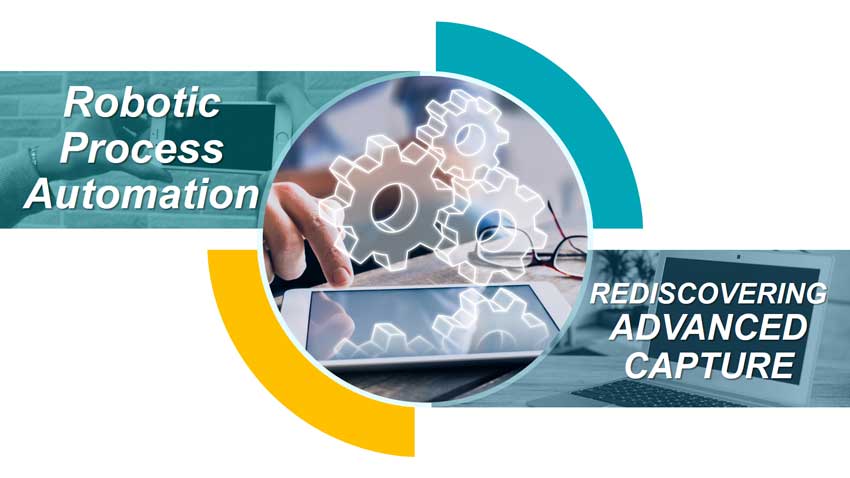“For example, the dwarfs found out how to turn lead into gold by doing it the hard way. The difference between that and the easy way is that the hard way works.” ― Terry Pratchett, The Truth
Robotic Process Automation (RPA) allows organizations to “rediscover” advanced capture. This includes the “front-office” business users who want advanced capture solutions that are simple to use with advanced capabilities. In reality, many capture solutions offer capabilities that are reductive in nature and are also only suited to very simple tasks that were solved decades ago with basic rules and templates. Basically, to offer a simple user experience, the capabilities have been pared down.
Will this route get you to the gold? No, it won’t. It won’t because creating simple rules tested on a few examples only gets you simple results that do not deliver precision, let alone unattended document automation. You might get what looks like automation that requires 100% manual review of the results or risk using error-prone data in your critical business applications. Organizations do not want a tradeoff between simplicity and capability. They need both.
Simply put, behind that proverbial “eureka moment” of finding the gold is undoubtedly a lot of hard work, performed by that person and often based upon the hard work of others. We see the results of hard work all over the place, but generally don’t stop to appreciate it. For example, when first released, the IPod and the iPhone (no more Apple references, I promise) looked simple. While the products feel simple, they hide a lot of complexity. We all want simple, but it takes a lot of hard work to get there.
Advanced Capture: Simplicity, Capability or Both
If you make use of advanced capture software, it is likely because you want to automate a manual process while achieving high rates of accuracy. But can you get high performance with a simple tool? Probably not. The reality is that, to achieve real unattended automation for document-intensive tasks takes a lot of effort to pull-off. You cannot just stop at creating a few classification rules and test it on a few (or even a few hundred) samples. You need large sample sets, capable staff and the tools to encode the rules that are devised. And then, you need to test the results on an even larger sample set. Analyze. Correct. Repeat.
For this reason, and not due to the relative complexity of most advanced captures solutions, the adoption of advanced capture software and realization of unattended processes has been relatively low. It would appear that to get the gold, you have to go the “hard way.”
The real answer is to put in hard work either with learning how to configure and optimize the software and taking the time to do it or deliver a solution that can do that for you. Enter Smart Learning. We are not dumbing-down advanced capture. We are doing the hard work to make configuration and optimization as simple as possible, allowing staff who are not experts in software configuration, let alone advanced capture concepts, to configure a system to use that immediately produces true automation.
This is cognitive RPA that is document automation suitable for all of us.
If you found this article interesting you may find this eBook useful: Parascript Smart Learning | Machine Learning Primer.
Search
Social Share
Article Catagories
Industry Insights
Partnerships
Product Updates
Related Posts
Endurance Italia Partnership Announcement
Problematic Document Processing in RPA Solutions
Let’s look at recent trends in new products and how their offering might leave buyers disappointed after the novelty of AI wears off. AI sells! What does that mean for you? It’s official – AI is everywhere and the push for acceptance has begun. Google has AI-based...
Features and Characteristics That Make Up Handwriting
Handwriting has been a powerful form of knowledge retention for more than five thousand years. It provides an efficient means to record information and connect us to the past and the future. Being a skill we learn at a young age and one that’s deeply unique to each...




